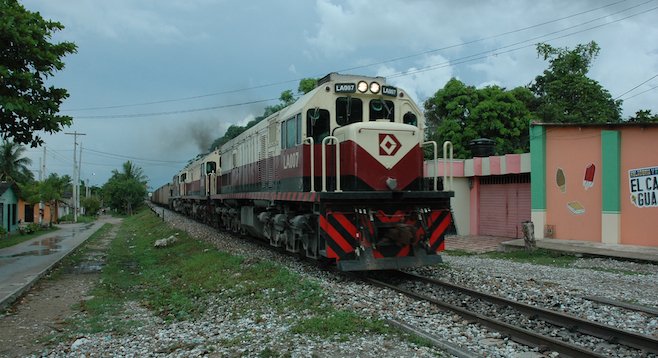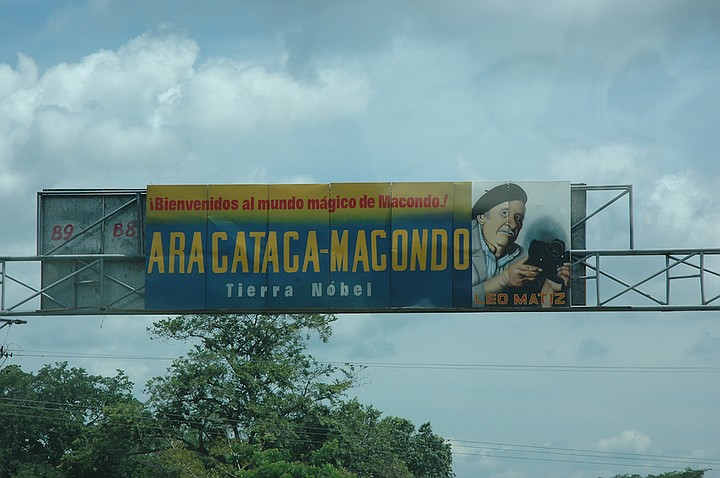 Facebook
Facebook
 X
X
 Instagram
Instagram
 TikTok
TikTok
 Youtube
Youtube

There is a family somewhere near the Colombian Caribbean coast who have a novel way of caring for their elderly, infirm grandfather.
Supposedly, along the banks of the river Magdalena, the very same river that courses from the Colombian interior to the Caribbean and through both the literature and vernacular of Gabriel García Márquez, there is a senile gentleman completely unaware to the small detail that he is fastened to his favorite rocking chair and hoisted up into the boughs of a sturdy ceiba tree.
How did I learn of this remarkable precautionary tale of geriatric abuse and perhaps staggering resourcefulness that takes “thinking outside of the box” several steps beyond? On a recent trip to the Colombian Caribbean, following a Garciamarquian route tracing events and locations, I was privy to what can only be described as truly Macondian images, tales and observations.
From what I hear, the only thing the grandfather in question realized was that he was comfortable in his chair and the family could go off to work with a peace of mind knowing that the Magdalena, whilst prone to bursting its banks from time to time, had never reached the heights of where their grandfather now sat.
Unfortunately, I never got to see granddad up in the ceiba, but my tour from the UNESCO masterpiece of Cartagena – where the very mortar in the walls seeps imagery of a García Márquez novel, and where only months before the Nobel Prize winner himself had addressed world literati – to the author’s hometown of Aracataca and favored restaurant in Barranquilla displayed that every town along the coast bears something of a Macondian tale.

Wandering around Aracataca, some 80km south of the tourist destination of Santa Marta, I was struck at the humility and attention of the locals, or "Cataceros" as they are known. All had a polite word to share and perhaps a joke to crack with the strange foreign journalist who appeared to have arrived too late to witness Gabo’s triumphant return after an absence of 24 years.
Crossing the famed train tracks that formerly transported passengers and bananas to the coast is to step back into a parallel universe reminiscent of another era. Now the banana plantations are gone, as is the United Fruit Company, and a new era of agricultural exploitation is taking place – that of the African palm.
It would be wrong to say that time has stood still in Aracataca. Perhaps it has just moved sideways rather than forwards. The old cinema where Gabriel García Márquez learnt to adore films has made way for a bric-a-brac market, the station has been newly painted yet there are no passengers, the guard slumbers, two men play dominos, and a guesthouse called the Gypsy Residence has been opened by an intrepid Dutchman affectionately referred to as Tim Buendía due to his knowledge of and love for all things Garciamarquian.
Change may benefit Aracataca, but the wealth is unlikely to remain in the town. Certainly a small dividend will filter down to the people via the new museum due to be opened in Gabo’s childhood home by the end of the year.

But how far will people travel once word is out that the only magic that Aracataca contains is the magic realism of García Márquez novels? For the literary traveler, this will surely be sufficient. It would take a lifetime to unearth the tales that he reveals of the coast. One trip to the Macondo of Aracataca will not be enough.
Aracataca is held in the delicate balance of being a backwater town shortly to be launched into the big time as a government-promoted tourist destination. Walking through its puddle-mottled streets after a torrential tropical shower, I felt that just the very presence of tourists and journalists here was upsetting the equilibrium struck by years of neglect.


There is a family somewhere near the Colombian Caribbean coast who have a novel way of caring for their elderly, infirm grandfather.
Supposedly, along the banks of the river Magdalena, the very same river that courses from the Colombian interior to the Caribbean and through both the literature and vernacular of Gabriel García Márquez, there is a senile gentleman completely unaware to the small detail that he is fastened to his favorite rocking chair and hoisted up into the boughs of a sturdy ceiba tree.
How did I learn of this remarkable precautionary tale of geriatric abuse and perhaps staggering resourcefulness that takes “thinking outside of the box” several steps beyond? On a recent trip to the Colombian Caribbean, following a Garciamarquian route tracing events and locations, I was privy to what can only be described as truly Macondian images, tales and observations.
From what I hear, the only thing the grandfather in question realized was that he was comfortable in his chair and the family could go off to work with a peace of mind knowing that the Magdalena, whilst prone to bursting its banks from time to time, had never reached the heights of where their grandfather now sat.
Unfortunately, I never got to see granddad up in the ceiba, but my tour from the UNESCO masterpiece of Cartagena – where the very mortar in the walls seeps imagery of a García Márquez novel, and where only months before the Nobel Prize winner himself had addressed world literati – to the author’s hometown of Aracataca and favored restaurant in Barranquilla displayed that every town along the coast bears something of a Macondian tale.

Wandering around Aracataca, some 80km south of the tourist destination of Santa Marta, I was struck at the humility and attention of the locals, or "Cataceros" as they are known. All had a polite word to share and perhaps a joke to crack with the strange foreign journalist who appeared to have arrived too late to witness Gabo’s triumphant return after an absence of 24 years.
Crossing the famed train tracks that formerly transported passengers and bananas to the coast is to step back into a parallel universe reminiscent of another era. Now the banana plantations are gone, as is the United Fruit Company, and a new era of agricultural exploitation is taking place – that of the African palm.
It would be wrong to say that time has stood still in Aracataca. Perhaps it has just moved sideways rather than forwards. The old cinema where Gabriel García Márquez learnt to adore films has made way for a bric-a-brac market, the station has been newly painted yet there are no passengers, the guard slumbers, two men play dominos, and a guesthouse called the Gypsy Residence has been opened by an intrepid Dutchman affectionately referred to as Tim Buendía due to his knowledge of and love for all things Garciamarquian.
Change may benefit Aracataca, but the wealth is unlikely to remain in the town. Certainly a small dividend will filter down to the people via the new museum due to be opened in Gabo’s childhood home by the end of the year.

But how far will people travel once word is out that the only magic that Aracataca contains is the magic realism of García Márquez novels? For the literary traveler, this will surely be sufficient. It would take a lifetime to unearth the tales that he reveals of the coast. One trip to the Macondo of Aracataca will not be enough.
Aracataca is held in the delicate balance of being a backwater town shortly to be launched into the big time as a government-promoted tourist destination. Walking through its puddle-mottled streets after a torrential tropical shower, I felt that just the very presence of tourists and journalists here was upsetting the equilibrium struck by years of neglect.
Comments